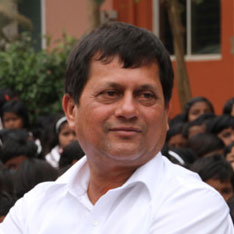By Debjyoti Barman
2nd Year, B. Tech. (CSE)
Education is an institution that is characterized by uniformity. Since the very beginning of school days, we were introduced to the practice of wearing school uniforms. It wasn’t done to enforce the dictatorial terms of the institute but to establish a sense of discipline and uniformity among the pupils. We might have overlooked the importance of the customized fabric back then but that one practice eliminated the gap that exists in our society till today. The uniform resurrected the differences of class and the variations of complexions to unify the souls under one identity. But the advancement from school to college life often brings an end to the thought of oneness. Why? Because no thread knits the multitude together. However, at the same time, the college regime can be one of the crucial stages to erase the differences and KIIT dictates how it is done.
Understanding Diversity College is a miniature platform of the life that waits beyond the years of graduation. The way we mould our thoughts and actions within the college days, is going to reflect in our behavior for the remaining years of our lives. And one of the primary mistakes that we make in this period and yet remain ignorant of it is generalizing people. We retain this attitude of building a perception about a person without properly acknowledging his thoughts. And to correct this approach we need to understand the culture and variations that guide an individual. This diversity could be channeled through race, ethnicity, language, culture, geography, and socioeconomic background. Understanding the polarities of each of these variations is crucial because perceiving them will prepare us to embrace the diversities we will face in life. KIIT is the home to the nationals of several countries and is widely renowned for its international standards of operation. As a KIITIAN, we should consider it as our fortune that we get to share our learning space with students belonging to different ethnicities and races. While some might consider it to be only a mode of advertisement, on other hand, many who validate quality education will only see it as an opportunity to learn about these multitudes. To understand and accept people with a different culture and viewpoint, demands deepened intellect and virtuous inclination. Additionally, to be able to seep into people with contrariety will harness one’s socializing and interacting skills.
A versatile educational setting is equally beneficial for catalyzing the learning process. The intermingling of diversities isn’t limited to only understanding one’s culture but also to widen one’s horizon of concepts and comprehending capacities. Most importantly, multiculturalism is a renowned recipe for creativity and uncompromising blend of newness.
Through righteous procedures adopted in institutes, the evils of segregation and prejudice could be fought. The religious intolerances which are fragmenting our world today could be conciliated through harmonious nurturing of the communities. And it is the institutes that serve as the platform that brings the blend in hues of the spectrum of diversity. The various instances of racialism, from the inhuman treatment of George Floyd to the racial abuse meted to the Indian cricket team on the Australian tour are consequences of a failed system of multicultural education. Its implementation and most importantly its judicious execution is a necessity in the present scenario.
Through ethnic amalgamation in colleges, we reiterate the definition of democracy. Being the citizens of the world’s largest democracy we must imbibe the capacity to acknowledge and respect the diversities around us. So our government and the institutes, including our own, have displayed their commitment towards equality through the inclusive welfare of the people whose backgrounds and experiences are different from our own.



Amalgamation indeed!.. Beautifully crafted!
A highly readable work that goes beyond thoughts and reflections, to point at the social evils of the changing society, and tries to seek solutions held within colleges, promoting harmony, which can play a significant role towards making of a better and holistic world, with the youths directly connected as a part of their search for better career prospects and life beyond limitations. Keep writing.